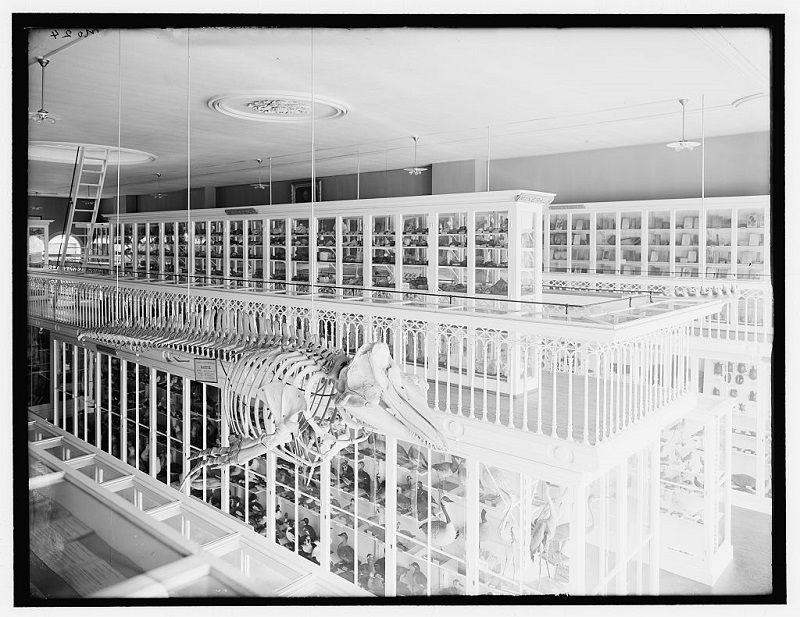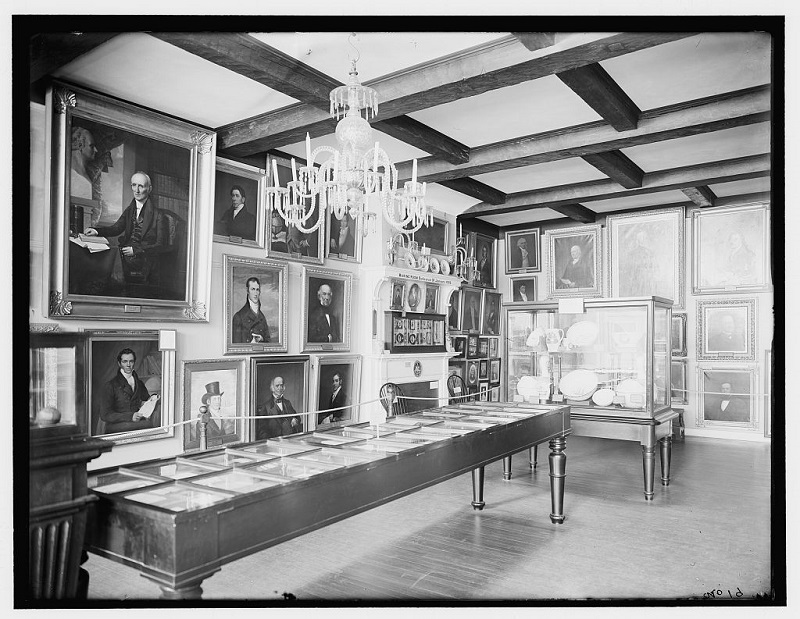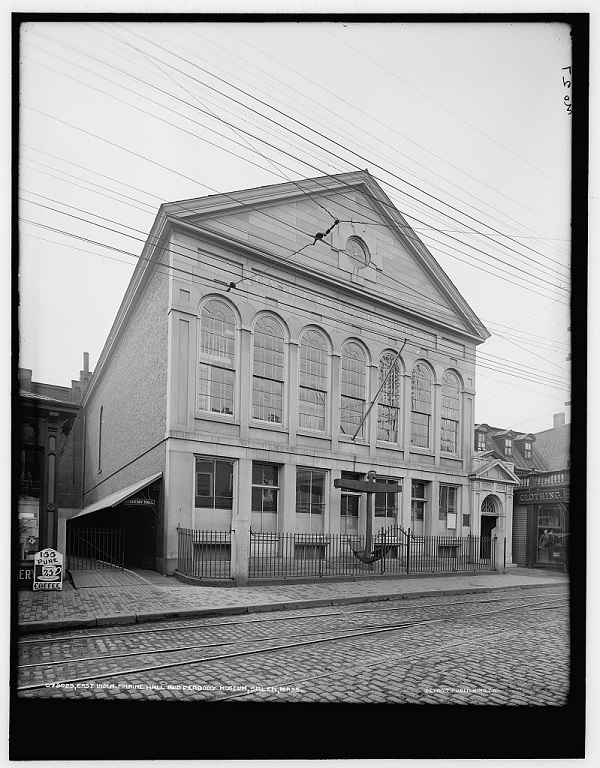East India Marine Hall is a museum building in Salem, Mass constructed by the East India Marine Society in 1825. The hall was constructed to house the society’s collection of maritime artifacts from around the world.
The East India Marine Society, established in 1799, was an organization of Salem captains and supercargoes who had sailed beyond either the Cape of Good Hope or Cape Horn.
When the society was founded, its charter stated that the society would establish a “cabinet of natural and artificial curiosities,” which is essentially a museum. The society’s members donated a large collection of objects from the northwest coast of America, Asia, Africa, Oceania, India and elsewhere.
The collection grew rapidly and by 1821 it included 2,269 artifacts and 10 years later it had grown to 4,299 artifacts.
The society was originally located in a building at the corner of Essex and Washington Streets but its rapidly growing collection forced it to move to a bank building on Essex Street in 1804.
Finally, in 1824, the society began construction on the East India Marine Hall on Essex Street, which became known as the East India Museum, and the building was formally dedicated during a ceremony on October 14, 1825, which President John Quincy Adams attended.
The museum shared the building with the Asiatic Bank (a bank formed to help finance the Maritime Trade), the Oriental Insurance Company, and the U. S. Post Office, which all occupied commercial space on the ground floor. The second floor consisted of the society’s great hall where it displayed it vast collection of artifacts.
The East India Marine Hall was designed by architect Thomas Waldron Sumner and is a two-story, Greek Revival-style building. It features a pitched roof, a granite facade, seven bays with arched windows on the second floor and rectangular windows on the first floor.
It also features a pediment gable with a round window and the name of the building is engraved in a granite panel just below the cornice.
In 1848, the East India Marine Society merged with the Essex County Natural History Society to form the Essex Institute. This merger brought together two extensive collections including ethnological objects, natural specimens, books and historical memorabilia related to Essex County in Massachusetts.
Salem’s maritime industry steadily declined throughout the 19th century and by 1850 it had shrunk so much that the society had difficulty finding members and considered selling off some of its artifacts to raise money.
In 1867, George Peabody, a wealthy expat, established a trust fund of $140,000 to purchase the museum’s collection and changed the museum’s name to the Peabody Academy of Science.
In 1867-69, the building was extensively remodeled and the first floor was converted into large front and rear exhibit rooms separated by a corridor and stairhall that ran across the building.
The doors on the front of the building were closed off and new formal entrances were constructed on both sides of the building. The great hall on the second floor was extensively renovated as well, losing much of its original architectural detail in the process, although it retained its original shape.
In 1885/86, the Academy Hall was constructed on the southeast corner of the building and was designed by architects Scone, Carpenter, and Willson of Providence, Rhode Island.
In 1904, the first floor was converted into museum space and a west side corridor entrance was constructed. In 1906, Weld Hall was built behind Academy Hall and was designed by architects Peabody and Stearns of Boston.
Also in 1906, the museum acquired a massive 4,450-pound hand-forged anchor, which was forged sometime between 1790 and 1812 for an unknown vessel, and put it on display in front of the building where it still stands today.
In 1952/53, additional gallery space was constructed and was designed by architect Andrew Hepburn.
In 1959 and 1961, Boston architect Philip W. Bourne designed the library wing and the
Crowninshield Room in the Colonial Revival style.
In 1965, East India Marine Hall was designated a National Historic Landmark and was added to the National Register of Historic Places in 1966.
In 1974/75, architects Bourne and Stahl, Bennett of Boston, designed the new Ernest S. Dodge wing, which is a granite-faced contemporary (Brutalist)-style building.
In 2003, the Peabody Essex Museum constructed a massive new wing of the museum, which was designed by architect Moshe Safdie, that now serves as the museum’s main entrance.
The East India Marine Hall is now used to host private events and houses some of the museum’s earliest artifacts as well as temporary art installations.
The East India Marine Hall is also now a stop on the Salem Heritage Trail.
Sources:
“Historic Building Detail: SAL.2473 Peabody Museum of Salem – East India Marine Hall.” MACRIS, Massachusetts Cultural Resource Information System, Massachusetts Historical Commission, mhc-macris.net/#!/details?mhcid=SAL.2473
“East India Marine Hall.” Peabody Essex Museum, pem.org/visit/historic-houses/pem-walks/east-india-marine-hall
Luca, Dustin. “Anchor returns to museum.” Salem News, 16 Sept. 2019, salemnews.com/news/local_news/anchor-returns-to-museum/article_908b73d3-c2bb-57f4-aeef-459fc288a70d.html
“Peabody Essex Museum is the oldest museum in the country.” Town & Country Magazine, 22 Sept. 2019, townandcountrymag.com/the-scene/parties/g29343119/peabody-essex-museum-2019/
“Museum History.” Peabody Essex Museum, pem.org/about-pem/museum-history




